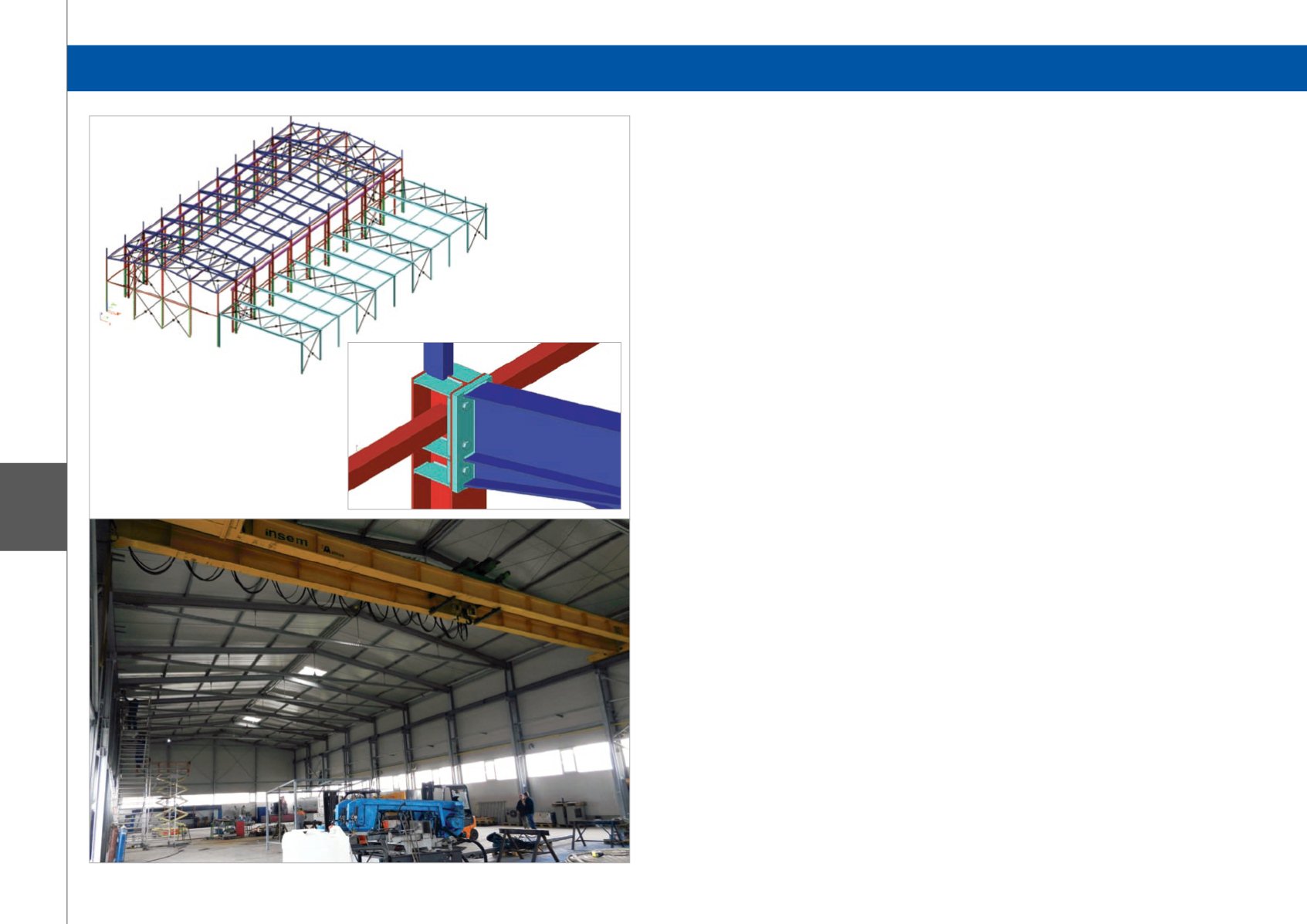
190
X3
Category 3: Industrial Buildings and Plants
The existing building is currently used for storage
activities. A development process demands changes
which will allow the company to use the existing building
for other purposes. After a redevelopment programme,
the reconstructed building will be mostly used as a “Steel
structures manufacturing plant”. Along one side of the
reconstructed facility there will be a new canopy for
storage and handling purposes.
Architectural design
The new design is based on the existing structure with a
rectangular floor plan of 1,015 m
2
and a double pitched
roof with a parapet wall around the perimeter. Along one
whole side of the facility there will be a new canopy of
788 m
2
, attached to the main columns of the structure
with openings on the front and rear sides. Inside the
main facility there will be a crane girder with a crane track
along the length of the building. The girder is intended for
an overhead travelling crane with a hoist that has a 10 t
bearing capacity.
The main goal of the design is to modify and strengthen
the existing steel structure with minimal additional
structural interventions in reconstruction. The crane
and the crane girder will be relocated from their current
location in another industrial building.
Steel structure design and technical data
Basic steel structure
The main bearing structure consists of double pitched
planar steel frames with a span of 20.0 m and a ~5.0 m
eaves height. Frame columns are anchored into
foundation buckets. The secondary structure consists
of roof beams and stability beams with cross diagonal
bracings. Both end frames have three facade columns
which are also supporting roof columns and wall diagonal
bracings.
Modified steel structure
The main structure frames are upgraded to a new eaves
height of ~9.0 m with identical steel column sections. On
the inner side of the frame, new column strengthening
profiles are added parallel to the existing columns with a
0.5 m axial distance and height of 7.4 m. These columns
have two functions. Firstly, they are to strengthen the
existing structure, and secondly, they are to carry crane
loads directly from the crane rail beams which are
mounted on top of new columns. The stability of these
columns is provided by angular bracing elements in the
same fields as the main stability elements of the building
and link beam elements to main columns.
Both end frames were raised to a new eaves height and
modified to assure the required bearing strength. The
roof beams of the end frames were strengthened with a
rectangular hollow steel section on the bottom side of the
main section while facade columns were strengthened
by adding a rectangular hollow steel section parallel to
the main column with a 0.30 m axial distance provided by
steel plates. Some additional stability beams were also
added because of larger buckling lengths.
In total, ~29,993t or 29.5 kg/m
2
of additional steel was
needed for the reconstruction of the main facility without
consideration of the crane-rail beams.
Crane rail track
The installed crane rail track extends from the second
axis and ends 1.2 m from the end of the building. The
total length of the track is 43.8 m. No additional steel was
added for the crane rail track.
Canopy
The canopy roof structure consists of main roof beams
and columns on one side. The roof beams are coped at
each end and strengthened with steel plates. Both end
frames were designed to sit on two columns, because no
additional loads were allowed on the corner columns of
the main facility. Stability beams and diagonal bracings
were used for global stability. The canopy structure
weighs ~23,855 t or 30.3 kg/m
2
.
Software and calculation model
Scia Engineer 2012 was used for 3D-Modeling and
calculation. The general idea was to achieve the complete
use of the existing structure with minimal reconstruction
costs, which was provided with optimisation of the
structure for at least 16.4 kg/m
2
or ~20% in comparison
with a similar structure type and loads on other buildings
calculated with other software. With the Scia software, all
EC and National standards were also used.
Software: Scia Engineer
Reconstruction of Existing Industrial Building MOBITEX - Lendava, Slovenia


